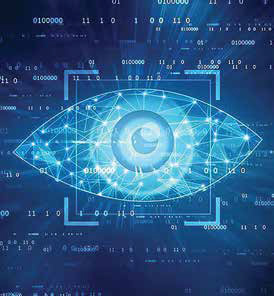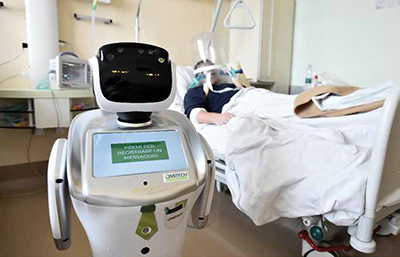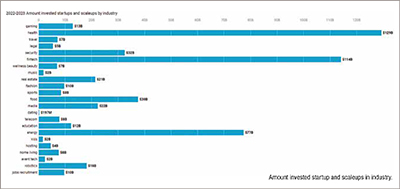
The article explores the transformative role of Artificial Intelligence (AI) in healthcare. It discusses AI's evolution from basic tasks to complex functions like radiology analysis and surgery assistance. The article also highlights various AI technologies, ethical considerations, and future prospects, emphasizing AI's growing significance in healthcare systems.

The concept of Artificial Intelligence (AI) has been around for a while since the 1990s, but it has truly gained significant attention and experienced rapid growth since the 2000s.
AI started to be used in healthcare about 10 to 15 years ago, although plans to use it date back to the 1900s. In 2010, only 21 AI companies were focused on healthcare; by 2020, that number had increased to over 300. At first, it performed simple jobs to help doctors and nurses, like keeping track of patient records and assisting with billing. During this period, healthcare professionals like doctors and nurses were responsible for the majority of tasks, such as detecting disease, giving advice, providing treatments, and taking care of patients.
Today, AI can do a lot more, including analyzing over 100,000 radiology images in 24 hours, which is something that would take a human radiologist much longer. It can now help doctors find diseases like cancer through X-ray analysis, and create personalized treatment plans. AI is also used in robots that can take care of patients and assist in surgeries.
The growth of AI in all fields in general, and in the healthcare system in particular, has been remarkable. In just a short period, it has gone from a very small helper to an important part of healthcare systems. Nowadays, people often mention AI in discussions about healthcare. According to an article published in 2020 on JMIR Publications, there were 1,473 publications related to AI in healthcare from 1995 to 2019.
In healthcare, the most common types of AI are Machine Learning, Natural Language Processing, Robotics, Computer Vision, and the Internet of Medical Things. Each type has its own special job in helping doctors, nurses, and patients.
1. Machine Learning
● Machine Learning is a part of AI that allows computers to learn from data without being programmed to do so. According to a study published in the Journal of the American Medical Association, machine learning algorithms correctly identified breast cancer 94.6% of the time, compared to 88.0% for human pathologists.
● According to the article “Smart Healthcare in the Age of AI” published on IEEE Access, Machine Learning can do many things in the healthcare system: using smartphone-based health monitoring systems to help in predictive analytics for various health conditions, analyzing sensor data and patient history to make accurate disease predictions, being included in robots, enabling robust data analytics capabilities, and making it a significant tool in the Internet of Health Things (IoHT). The importance of machine learning is growing everyday.
2. Natural Language Processing (NLP)
● NLP helps computers understand and respond to human language. A 2019 study found that NLP algorithms could process and analyze electronic health records 20 times faster than a human, with an accuracy rate of 99%.
● In healthcare systems, NLP is used for assisting in clinical practice, such as suggesting treatments, diagnosing diseases, scheduling, billing, and transcribing medical records. NLP can be used in wearable devices and apps to monitor health metrics, provide real-time feedback, and even offer mental health support for patients. NLP can analyze large sets of health data to identify trends for public health planning, and it can help in the drug discovery process by analyzing complex biochemical interactions. Some outstanding uses of NLP include analyzing large sets of COVID-19 data for trends and developing predictive models.

3. Robotics
● Robotics involves the use of robots to perform tasks. Nowadays, it is not hard to find robots in hospitals. They are there to help healthcare professionals finish tasks more easily. In 2018, robots assisted in over 1 million surgeries worldwide. These robots have a precision level of 99.8%, reducing surgical errors significantly.
● Robots are used as surgical assistants in the operating room, including laparoscopy. Robots assist in the rehabilitation process and appear in hospital rooms to help caregivers take care of patients. Robots can be operated remotely to carry out tasks, especially in contaminated environments. This is particularly useful in outbreaks like the Ebola virus, which reduces the time healthcare personnel need to spend in dangerous areas. Some robots are specifically designed to interact with humans and manipulate objects in their environment.

4. Computer Vision
● Computer vision is a technology that helps computers see and understand images and videos. A study in Radiology found that computer vision could detect lung cancer in CT scans with 97% accuracy, compared to 94% for human radiologists.
● Medical images are harder to read and analyze than other images. Therefore, computer vision in healthcare is crucial for helping doctors reduce time in diagnosing diseases and providing treatments for each patient. It is now used in radiology to read X-rays, MRIs, and other medical images. Computer vision can also monitor patient movements for safety.

5. Internet of Medical Things (IoMT)
● The Internet of Medical Things (IoMT) involves medical devices connected to the internet for better data collection and analysis. IoMT plays a crucial role in the healthcare industry, increasing the precision, consistency, and throughput of electronic devices. According to a report by Allied Market Research, the global IoMT market is expected to reach $136.8 billion by 2021.
● IoMT devices assist in the remote monitoring of patients. Doctors, nurses, and even patients can easily monitor a patient’s day-to-day health records and alert healthcare providers in case of emergencies.
However, along with the rapid growth of AI in the healthcare industry, there are issues that have been raised and need attention in the near future.
1. Safety and Evidence Standards
Ethical concerns about safety and evidence standards in biomedical AI have been raised. The question is whether AI technologies are safe and whether they meet medical standards, or if they adhere to their own standards, which could be lower.
2. Informed Consent
The use of AI in healthcare raises questions about informed consent, especially when automation impacts both caregivers and patients. Some patients worry that their data might be leaked for wrong purposes by AI systems. In the near future, patients need to be fully aware and agree to how their data will be used by AI.
3. Fairness and Discrimination
AI systems can sometimes be biased, leading to unfair or discriminatory treatment. This is a significant concern, especially when it comes to healthcare, where the stakes are high. Care must be taken to ensure that AI systems are trained on diverse data sets and are regularly audited for bias. Ensuring fairness in AI systems is not just an ethical requirement but also a medical necessity to provide equitable care to all patients.
4. Patient-Provider Relationship
While AI has the potential to revolutionize healthcare, it's important to remember that it has no experience or emotion. An overreliance on AI could erode the essential human elements in the patient-provider relationship. Some patients are concerned that the personal touch, care, and empathy that come from human healthcare providers could be lost. Therefore, it's crucial to find a balance where AI acts as a tool for healthcare providers, not a replacement.

5. Liabilities
As AI systems become more integrated into healthcare, questions about legal responsibility arise. Determining who will take responsibility in cases where AI systems are involved in medical decisions or errors is a complex problem related to legal issues. The question raised here is, should AI be involved in important medical decisions, and if so, who is accountable if something goes wrong? This is an area that will likely require new legal frameworks.
Health is a subject that humans universally care about, and consequently, every country prioritizes investment in the healthcare industry. As the general investment in healthcare grows, so does the investment in AI in healthcare. According to a report by PwC, the potential economic impact of AI in healthcare could be up to $15.7 trillion by 2030. This suggests that as technology advances, AI will play an increasingly significant role in healthcare, from diagnostics and treatment plans to administrative tasks and beyond.

1. Upcoming Technologies and Research Areas
The future of AI in healthcare is closely tied to emerging technologies like quantum computing and blockchain. Quantum computing could drastically speed up data analysis, making it 100 times faster, which is crucial for areas like genomics and drug discovery. On the other hand, blockchain offers a secure and transparent way to store patient records and track pharmaceuticals. As these technologies mature, they could solve complex challenges in healthcare, enhancing the effectiveness of AI tools in medical research and patient care.

2. The Role of 5G and Other Advanced Technologies
5G and other advanced technologies are under development and expected to revolutionize industries, including healthcare. With the rollout of 5G, data transmission speeds could increase by up to 20 times, making real-time data analysis and remote surgeries more feasible. In the future, 5G may provide the necessary speed and connectivity for AI technologies to function more efficiently in healthcare.

The use of AI in healthcare has come a long way and is set to become an even more integral part of global healthcare systems. While challenges remain, the numbers indicate a promising future, backed by significant investment and technological advancements.
References
1. https://hbr.org/2018/05/10-promising-ai-applications-in-health-care
2. https://www.jmir.org/2020/7/e18228/
3. https://ieeexplore.ieee.org/stamp/stamp.jsp?tp=&arnumber=9565155
4. https://arxiv.org/pdf/2110.15803.pdf
5. https://www.matec-conferences.org/articles/matecconf/pdf/2018/12/matecconf_icmme2018_02004.pdf
6. https://downloads.hindawi.com/journals/jhe/2018/5157020.pdf
7. https://academic.oup.com/edited-volume/34287/chapter-abstract/290676282?redirectedFrom=fulltext
8. https://www.irjmets.com/uploadedfiles/paper//issue_9_september_2023/44458/final/fin_irjmets1693934878.pdf
9. https://link.springer.com/chapter/10.1007/978-3-030-72080-3_5
10. https://docs.google.com/presentation/d/156WpBF_rGvf4Ecg19oM1fyR51g4FAmHV3Zs0WLukrLQ/edit#slide=id.g24daeb7f4f0_0_3373